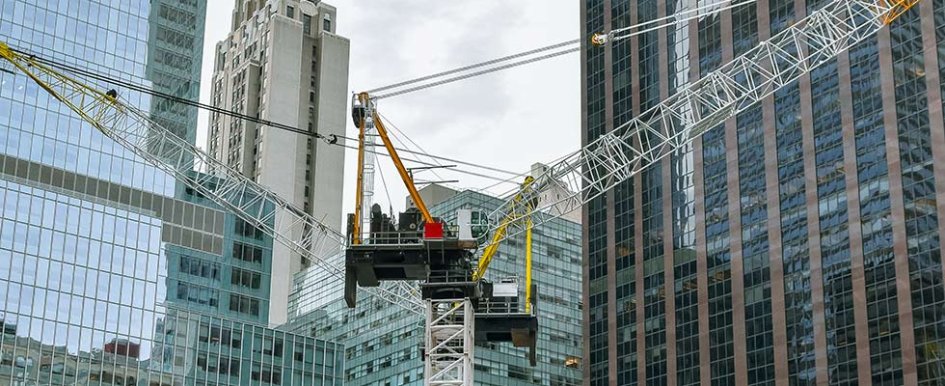
July’s tower crane fire, and subsequent collapse, at a construction site on 41st Street in New York City (NYC) made for some exciting viral video content and a few days’ worth of local headlines. Just as quickly as it went viral, it faded away and will be another footnote in the ongoing story that is the Manhattan skyline. For those directly affected by the collapse, though, the effects will last much longer. When these types of accidents occur, we look for answers to the same three questions:
- Could this have been prevented?
- What can be done to prevent this from happening again?
- Who pays for it all?
Early investigation reports show that the fire was caused by hydraulic fluid leaking onto hot metal within the engine and igniting. The heat from the ensuing fire caused the supports and machinery attached to the crane’s boom to melt and fail, and the boom to collapse. If these early reports prove to be accurate, the obvious answer to the question regarding prevention might be that there should have been more frequent inspection of the crane and its maintenance.
This simplistic answer ignores several key facts, including that crane operations in NYC are some the most closely monitored in the country; that it isn’t exactly practical for the crane to be disassembled and inspected on a weekly basis; and that regardless of the maintenance procedures, sometimes mechanical components fail.
The same nonanswers can be applied to what can we do to prevent this from happening again. In this case, as with many concerning safety and claim prevention in New York construction, we need to look at a much broader picture: a picture that looks at the cost of construction and the cost of insurance to cover it in NYC, and how that cost directly limits the amount and quality of safety and oversight on jobsites. Large and densely populated cities like NYC are inherently more risky and therefore more expensive to insure.
Look no further than the number of people injured in this collapse and the damage to the adjacent building, but that is only part of the story. The lead character in this tale is New York Labor Law 204/241. This piece of legislation, originally enacted in the early 1900s, was designed to hold owners accountable for managing site safety by hurting them financially if they did not. This was long before there were workers’ compensation laws, the Occupational Safety and Health Administration (OSHA) or the NYC Department of Buildings, and it assigns total liability to owners in the event of a gravity-related loss.
Many other states enacted such laws at the time, and they were responsible not just for improving worker safety but for paving the way for the laws and public agencies that safeguard modern jobsites. More than 120 years later we have, thankfully, outgrown the need for such measures but in New York, this law is still in place.
What does this have to do with rising construction costs? From an insurance perspective, quite a bit. Under Labor Law 240/241, comparable negligence is not a factor. All that needs to be proven is that gravity was involved and there was injury. After that, claimants just wait for awards from judges and juries that far outweigh the injuries and losses sustained. Insurance companies — or the few left that are still willing to cover contractors and projects in NYC — have no ability to defend against these awards. Their only recourse is to continue to increase the premiums they charge.
As premiums rise within a finite budget, there is less that can be devoted to other areas. Imagine the quality of jobsite safety and oversight if liability premiums were cut in half because there were more carriers paying fewer claims. How many more site supervisors and safety personnel could your average contractor afford to hire, or how much downtime for equipment inspections would be allocated in a project’s budget? Freeing up capital from needlessly high insurance rates to be used for new equipment and more site safety is one way to prevent accidents like these from occurring again in the future.
It is important to note that injuries and damages were minimized by the quick actions of responsible people. The injuries and damage that did result will be quickly and properly covered by an adequate insurance program.
As for the future, what happens when a developer is forced to scale back limits on their policies to bare minimums required just to get the project built, and they are insufficient to cover a more severe accident? Owners and contractors need to see this accident for the warning that it is.
If they do not join with entities like the Metropolitan Transportation Authority and Port Authority of New York and New Jersey in pushing for reforms to the labor law, the industry is going to reach a point where construction projects of any type will become uninsurable. It will become a challenge to build new schools, hospitals and buildings as well as continue infrastructure maintenance. That is the real lesson learned here.



